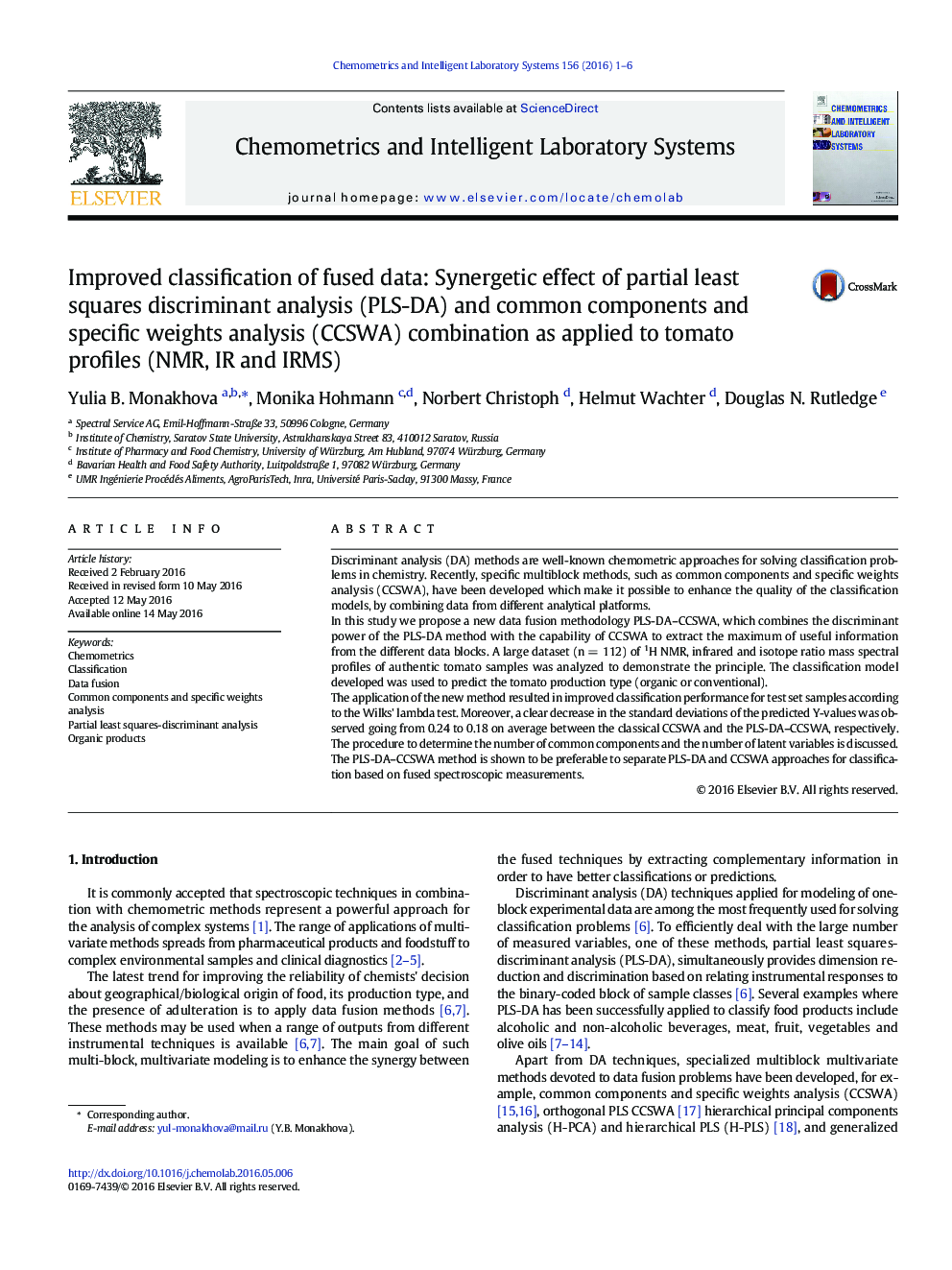| کد مقاله | کد نشریه | سال انتشار | مقاله انگلیسی | نسخه تمام متن |
|---|---|---|---|---|
| 1181232 | 1491523 | 2016 | 6 صفحه PDF | دانلود رایگان |

• A new data fusion methodology was developed.
• It improves the CCSWA by orienting the model towards the targeted property by PLS-DA.
• The new method was applied to 112 tomatoes profiles (NMR, IR and IRMS).
• PLS-DA–CCSWA outperforms PLS-DA and CCSWA approaches as well as MB hierarchical PLS.
• PLS-DA–CCSWA is suitable for classification based on fused measurements.
Discriminant analysis (DA) methods are well-known chemometric approaches for solving classification problems in chemistry. Recently, specific multiblock methods, such as common components and specific weights analysis (CCSWA), have been developed which make it possible to enhance the quality of the classification models, by combining data from different analytical platforms.In this study we propose a new data fusion methodology PLS-DA–CCSWA, which combines the discriminant power of the PLS-DA method with the capability of CCSWA to extract the maximum of useful information from the different data blocks. A large dataset (n = 112) of 1H NMR, infrared and isotope ratio mass spectral profiles of authentic tomato samples was analyzed to demonstrate the principle. The classification model developed was used to predict the tomato production type (organic or conventional).The application of the new method resulted in improved classification performance for test set samples according to the Wilks' lambda test. Moreover, a clear decrease in the standard deviations of the predicted Y-values was observed going from 0.24 to 0.18 on average between the classical CCSWA and the PLS-DA–CCSWA, respectively. The procedure to determine the number of common components and the number of latent variables is discussed. The PLS-DA–CCSWA method is shown to be preferable to separate PLS-DA and CCSWA approaches for classification based on fused spectroscopic measurements.
Journal: Chemometrics and Intelligent Laboratory Systems - Volume 156, 15 August 2016, Pages 1–6